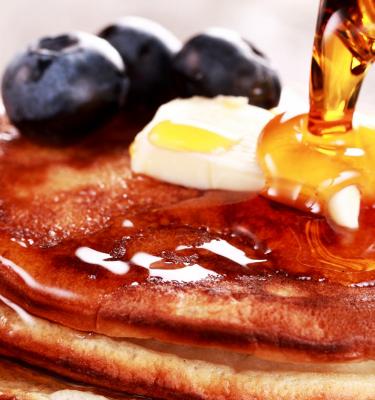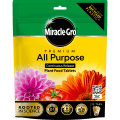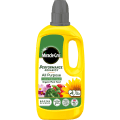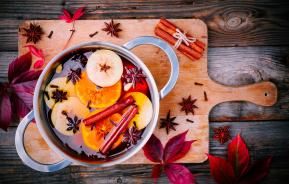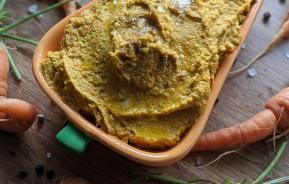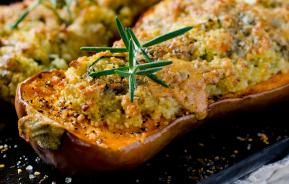Here, at LoveTheGarden we get excited about the extremely popular Pancake Day – so whatever you’re doing, it’s the perfect excuse to pick up some maple syrup and create a stack of homemade pancakes up to the ceiling.
What is maple syrup made of?
Maple syrup is made from the xylem sap of maple trees. The trees most commonly used are sugar maple, red maple and black maple because of their high sugar content in the sap (approximately 2% to 5%). The sap consists mainly of sucrose and water, with parts of glucose and fructose from the invert sugar which are produced in the boiling process. This is detailed later on in this article. These maple trees store starch in their trunks and roots before the winter when the temperatures get colder, the starch then converts to a sugar substance that is produced in the spring. To process this sap into the syrup you put on your pancakes the sap is heated, evaporating the majority of water and leaving concentrated sap.
The history of syrup
The syrup was first documented to have been collected in North America by the indigenous people. The practice was then adopted by the Europeans, who went on to refine the production method, and by the 1970s syrup was being refined even further producing the syrup we eat today.
The largest producer of maple syrup today is the Canadian province of Quebec – which produces approximately three-quarters of the world’s produce. Nowadays, the maple leaf carries great cultural significance. Maple is considered to be symbolic of Canada and is represented in the country’s flag.
Maple syrup is valued based on its density and translucency – and is most commonly dribbled over pancakes, waffles, oatmeal and porridge. It can also be used as an ingredient in baking, and as a sweetener.
The production of maple syrup
The sap is ‘tapped’ from sugar trees aged between 30 to 40 years in Springtime, and each tree can support between one and three taps depending on the diameter of the trunk. The average maple tree will produce between 30 to 45 litres per season. Each season lasts between four to eight weeks – weather dependant. Starch is stored in the roots for the winter and then rises through the trunk which is when the sugary sap can then be tapped. The sap is not tapped and collected at night because the drop in temperature is problematic for the steady rise and flow of sap.
The sap is collected and boiled down in order to obtain a pure syrup. It is made by boiling 20-50 volumes of sap over an open fire at a temperature of 4.1°C (39.4°F). The amount to be boiled depends on the concentration of the syrup. The process of boiling the syrup must be an extremely controlled one to accurately ensure the correct sugar content. If you over boil the syrup it will eventually crystallise, while under-boiled can lead to a watery substance that will spoil quickly. Next, the syrup is filtered to remove what is known as sugar sand, a substance made up mainly of sugar crystals and calcium malate which cause an unpleasant gritty texture if left.
In terms of calories, maple syrup is very similar to sugar. However it is a good source of manganese and zinc, while compared to honey, maple syrup has 15 times as much calcium.
Culinary expert Delia Smith described maple syrup to be "a unique ingredient, smooth- and silky-textured, with a sweet, distinctive flavour – hints of caramel with overtones of toffee – and a rare colour, amber set alight. The maple flavour is, well, maple flavour, uniquely different from any other.”
For a more detailed explanation on the process of how to make maple syrup check out the video.
Now that you know all about maple syrup, why not use some in your favourite sweet dishes this month. Besides pancakes, our favourite recipe is this soft and chewy flapjack mix…
Maple syrup flapjacks recipe
Prep time: 10 mins
Cook time: 20 mins
Servings: Makes 12 - 16
Ingredients
- 175g unsalted butter, cut into cubes
- 1 tbsp maple syrup
- 150g demerara sugar
- 250g medium porridge oats
- Pinch of sea salt
- 1 tbsp desiccated coconut (optional)
Directions
Preheat the oven to 180°C/Gas mark 4. Place the butter, maple syrup and sugar in a large heavy-based saucepan. Heat gently, while stirring often, until the butter has melted and the sugar is still grainy.
Take off the heat and add the porridge oats, salt and desiccated coconut, if applicable. Mix together the ingredients until evenly combined. Turn the mixture into the prepared baking tray, spread evenly and firm down well with a fork/the back of a spoon.
For a soft and chewy flapjack, bake for about 20 minutes until a light-medium golden colour. Wait a bit longer if you prefer a crispy, well-cooked flapjack.
Run a knife around the edge to loosen the flapjack, leave for 5 minutes, and then mark into bars or squares. Leave in the tin until cold before cutting into pieces and removing to a wire rack.
Variations
Muesli: Replace the oats with 300g of your favourite muesli.
Cherry and coconut: Add 50g desiccated coconut and 75g quartered glacé cherries.
